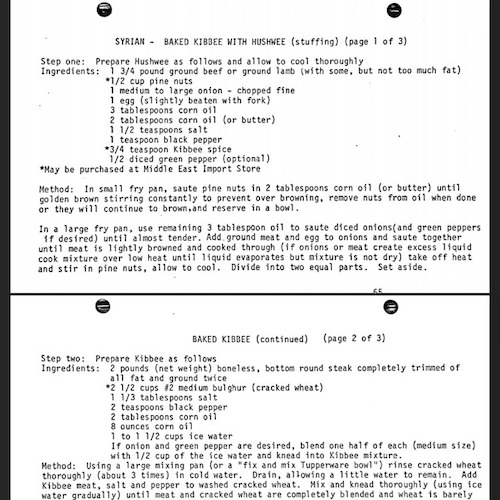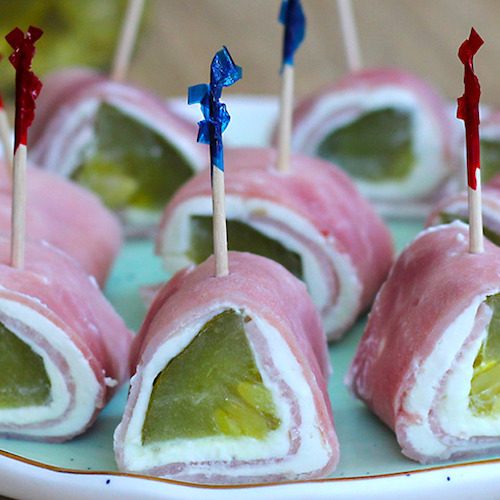Midwestern church potlucks are eerily similar. It doesn’t matter much what state you’re in, or even what denomination you belong to. I’ve figured that out over the years. I’ve probably been to hundreds of them—in small towns and cities, at churches of all sizes, from Minnesota to Nebraska to South Dakota to Iowa to Ohio.
Everyone brings a dish to share. They’re all laid out on a long table. Everyone fills a plate, sits, and talks, sipping instant iced tea or powdered lemonade.
My parents are missionaries. When we’d come back after a term overseas, we would be the visiting guests of honor in church after church. After the service, during which my dad would show a slide presentation and our family would provide the “special music,” we’d head into the basement or all-purpose room for the potluck held in our honor. The pastor would pray, or ask my dad to do so, and then everyone would turn to us. “Let’s let our guests go first!” some awkwardly friendly voice would boom. Plates would appear in our hands, and suddenly we’d be at the front of the potluck line.
Everyone brings a dish to share. They’re all laid out on a long table. Everyone fills a plate, sits, and talks, sipping instant iced tea or powdered lemonade.
There were some regional differences in the buffets. The best lines started with fried chicken. The worst started with something my parents had to bribe me to eat. There were always creamy casseroles, gelatin salads, vegetable salads laden with mayonnaise and too many desserts—pies, cookies, cakes and bars—to count.
I’m a child of the Midwest. My dad is from small-town Iowa, my mom the daughter of Nebraska farmers. But when I was a kid, I never felt like I belonged to the Midwest.
I was the visitor, the child who returned from a different country, and that made me weird. I suspect I felt weirder than anyone ever actually thought I was. Standing at the front of a food line as a thirteen year old, everyone looking you, has that effect.
Those church potlucks were community manifested. There was a pecking order to them. Everyone knew who had the best casseroles, whose cookies to go for, which recipes contained a secret ingredient that so-and-so learned from his great-grandmother and would carry to his grave. Even as a kid, I recognized that the dishes on those long tables made up more than a simple meal. They represented bonds that I couldn’t hope to understand as an outsider, but that I wanted for in my own life.
Churches are supposed to be communities of people who care for one another. They represent the best kind of heartland values—neighbors caring for neighbors, pitching in to create a collective good that’s more than the sum of its parts. Churches of every variety fail at this goal, day in and day out. The faithful know that most of all. Still, it’s hard to write off congregations’ best attempts to know and live in community.
My transient childhood had its own wonders. I don’t regret it in the least. But at those potlucks, I would feel a pang of jealousy. The rest of us could take lessons from those communities that care for each other through food.
Pretzel Salad
Serves 10-12
Though I usually didn’t get to bring a dish to potlucks myself, my family’s pretzel Jello salad remains a family favorite. It still comes out every Christmas, to be devoured by three generations of proud Midwesterners. In classic potluck fashion, the name “salad” is a complete misnomer. This is a dessert.
Ingredients
¾ cup melted margarine or butter
3 tbsp. brown sugar
2 cups crushed pretzels (measure after crushing)
8 oz. cream cheese
1 cup granulated sugar
4.5 oz. frozen dessert topping (such as Cool Whip)
1 package strawberry Jello
2 cups boiling water
1 lb. frozen strawberries, thawed but still cold, whole or in pieces
Preparation
Preheat the oven to 350°F.
In a large mixing bowl, combine margarine or butter, brown sugar, and crushed pretzels. Mix well. Press the mixture into a 9×13-inch baking pan in a single, flat layer, and bake for 10 minutes. Let rest until cool to the touch.
While the first layer cools, cream together cream cheese, sugar, and dessert topping using a handheld mixer or a stand mixer. Spread the mixture over the first layer. Cool the pan in the refrigerator until the second layer is set, about 45-60 minutes.
Stir Jello into boiling water. Let mixture cool for 5 minutes, then stir in strawberries. After Jello mixture cools to room temperature, spread over the second layer. Refrigerate for at least 2-3 hours or up to overnight. Cut into squares and serve cold.




